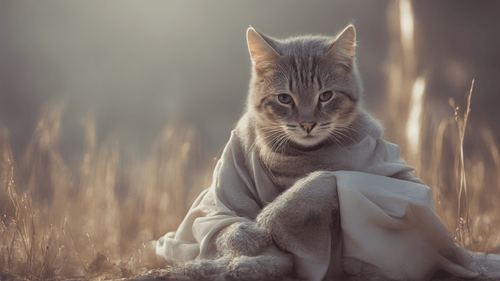
Introduction
In the ever-evolving landscape of artificial intelligence, one phenomenon has emerged as a captivating blend of technology and creativity - Chat GPT Stories. These digital narratives, crafted by the remarkable GPT language model, are revolutionizing the art of storytelling. By seamlessly integrating human-like conversational skills with unparalleled language generation, chat GPT stories are enchanting readers across the globe. This article delves into the fascinating realm of chat GPT stories, exploring their significance, creation process, impact on literature, and much more.
Chat GPT Stories: Redefining Digital Narratives
As we step into a world driven by AI and automation, the realm of storytelling has also undergone a paradigm shift. Chat GPT stories represent a groundbreaking fusion of technology and creativity. These narratives are born from the GPT (Generative Pre-trained Transformer) model, a language processing AI system developed by OpenAI. By employing a mix of machine learning algorithms and natural language understanding, chat GPT stories bring characters to life and transport readers to immersive fictional universes.
The Creation Process Behind Chat GPT Stories
Training the AI: Igniting Creativity
Chat GPT stories are a product of meticulous training of AI models. GPT-3, the third iteration of the GPT series, has been instrumental in crafting these narratives. During the training phase, the AI model is exposed to an extensive range of texts, from books and articles to scripts and conversations. This exposure equips the model with a comprehensive understanding of language nuances, enabling it to generate coherent and engaging narratives.
Prompting and Response: Forging Conversations
To create a chat GPT story, a human input known as a "prompt" is provided. This prompt sets the stage for the narrative and guides the AI's response. The model then takes over, generating text that continues the story in a conversational manner. The dynamic interplay between prompts and AI-generated responses results in narratives that mimic authentic dialogues.
Engaging Readers with Chat GPT Stories
Immersive Conversations: Captivating Audiences
One of the standout features of chat GPT stories is their ability to engage readers through immersive conversations. The narratives unfold as dialogues, making readers feel like active participants rather than passive observers. This unique approach brings a new level of engagement and interactivity to storytelling, blurring the lines between reality and fiction.
Personalized Experiences: Tailoring the Narrative
Chat GPT stories have the remarkable capacity to adapt to individual readers. By analyzing user interactions and preferences, the AI can tailor the narrative in real-time. This personalization adds depth to the reading experience, making each story resonate on a more profound level.
The Impact of Chat GPT Stories on Literature
Expanding Creative Horizons: Pushing Boundaries
Chat GPT stories have expanded the horizons of literary creativity. Authors now have a powerful tool at their disposal to experiment with narrative structures, genres, and tones. This AI-driven collaboration between technology and human imagination has paved the way for innovative storytelling forms.
Accessibility and Inclusivity: Reaching Wider Audiences
One of the transformative aspects of chat GPT stories is their potential to bridge accessibility gaps. Individuals with varying reading abilities can now engage with narratives through conversational formats. Additionally, stories can be translated and adapted into different languages, making literature more inclusive and diverse.
FAQs about Chat GPT Stories
How Accurate are the AI-generated Stories?
The accuracy of AI-generated stories largely depends on the quality of the input prompt and the training of the model. With well-crafted prompts and extensive training, the AI can produce highly coherent and engaging narratives.
Can Chat GPT Stories Replace Human Authors?
While AI-generated stories are impressive, they don't replace the unique creativity and emotional depth human authors bring to their work. Chat GPT stories are a powerful tool for collaboration and inspiration rather than a replacement.
Are There Any Ethical Concerns with AI Storytelling?
Ethical concerns, such as bias in storytelling and plagiarism, can arise in AI-generated content. It's crucial to monitor and address these issues to ensure responsible and ethical use of AI in storytelling.
Can Chat GPT Stories Adapt to Different Genres?
Absolutely! Chat GPT stories are versatile and can adapt to a wide range of genres, from fantasy and science fiction to romance and mystery. The AI's flexibility allows it to create compelling narratives across diverse genres.
Are Chat GPT Stories Copyrighted?
The copyright aspect of AI-generated content is an evolving area. Generally, the person providing the prompt holds the copyright to the specific generated content. However, legal nuances can vary based on jurisdiction and context.
What's the Future of Chat GPT Stories?
The future of chat GPT stories is exciting and full of potential. As AI technology continues to advance, we can expect even more sophisticated narratives that blur the line between human and AI-generated content.
Conclusion
In a world where technology is reshaping the way we interact with narratives, chat GPT stories stand as a testament to the creative synergy between human ingenuity and artificial intelligence. These stories offer a glimpse into the future of storytelling, where innovation knows no bounds. With their immersive conversations, personalized experiences, and transformative impact, chat GPT stories have carved a unique space in the literary landscape. As we move forward, the ongoing collaboration between humans and AI promises to usher in an era of storytelling that captivates, inspires, and sparks boundless imagination.